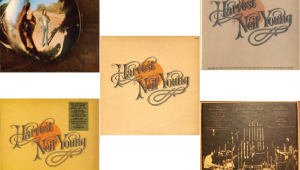Ahoj, kamaráti. Chcem sa s vami podeliť o skvelý site nájsť bookmakera. Našiel som tu veľa užitočných informácií o stávkových kanceláriách, ich bonusoch, ako aj o stratégiách stávkovania. Používateľsky prívetivé rozhranie a prehľadná štruktúra stránky z nej robia nepostrádateľný nástroj pre každého, kto sa zaujíma o svet stávkovania v Slovinsku. Ďakujeme tímu za ich prácu!
Survey: ‘Cord Reviving’ Is Now a Thing
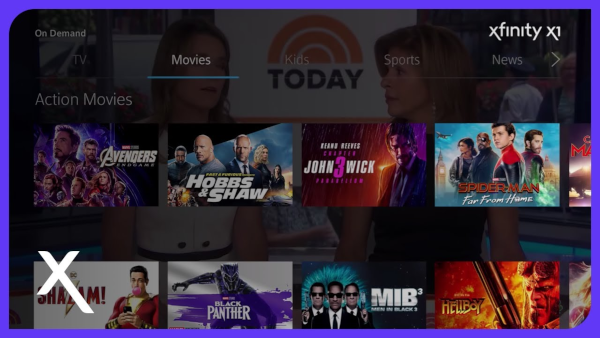
It was bound to happen. Between the chaos of trying to figure out which streaming services offer the programs you want to watch and the escalating cost of subscribing to those services, more Americans are saying “we’ve had enough” and pulling pack on how much they spend a month on streaming entertainment, watching more free TV, and in some cases even reviving cable subscriptions.
Yes, “cord-reviving” — the opposite of the decade-long trend of “cord-cutting” — is a thing.
Have you rejiggered your streaming lineup over the past year? And, if not, I’m willing to bet you’ve at least through about it when you select Netflix or another streaming service to watch.
TiVo’s latest Video Trends Report confirmed that in a year’s time Americans and Canadians reduced how much they spend a month on entertainment by about $13 a month, canceling “subscription video on demand” (SVOD) services such as Netflix and Disney+ (24%) almost as often as they add new services (29%), showing they’re not afraid to leave if they think it costs too much. To wit: One in five (21%) of those surveyed reported cancelling a service during the six-month period prior to the survey because the service “raised its prices.”
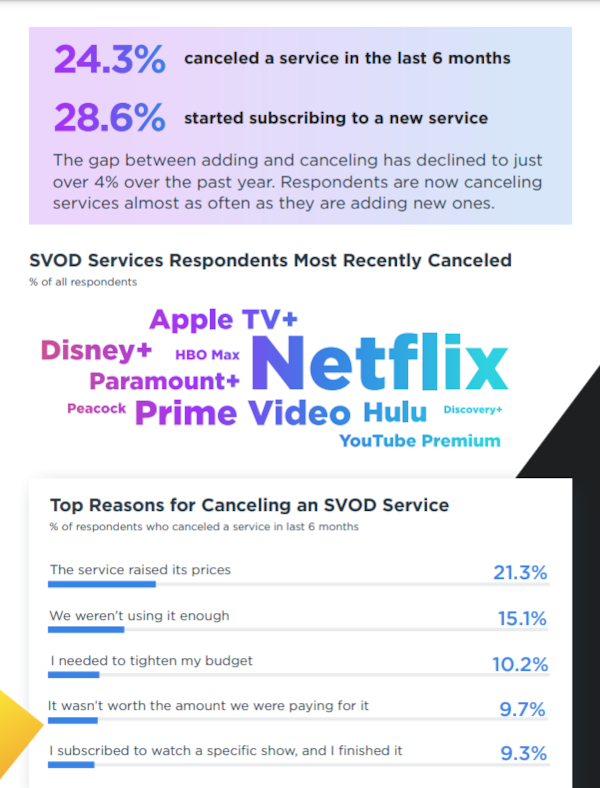
These findings were bolstered by a new survey commissioned by Forbes Home and conducted by OnePoll, which found that 45% of Americanshave canceled at least one streaming subscription over the last year, citing high costs as the primary reason for doing so. Given that the most expensive of the ad-free monthly subscriptions cost $17.99 (Hulu), $15.99 (Max), $15.49 (Netflix), $13.99 (Disney+), and $11.99 (Paramount+ and Peacock) this is certainly not surprising.
What may surprise you is which streaming services Forbes survey respondents say they are most likely to drop if prices increase again: Disney topped the list with 44% of the vote, followed by Hulu (40%), ESPN+ (35%), Netflix (32%), Amazon Prime Video (32%), Max (21%), Apple TV+ (17%), AMC+ (13%), Paramount+ (10%), and Starz (9%).
Back to the TiVo survey: Going hand in hand with the trend toward reducing monthly entertainment expenses is an increased willingness to tolerate ads, which often translates into saving money. Two-thirds of households with an annual income between $50,000 and $100,000 aren’t particularly bothered commercials, a number that dips to 65% among households that earn between $20,000 and $50,000 and 60% among lower-income households with an annual income less than $20,000.
In another sign of the shift in how we spend our entertainment dollars at home, the average consumer subscribed to seven video services back in 2021 but used only two free streaming options such as Samsung TV Plus or the Roku Channel. Today, the number of non-paid video sources we rely on has more than doubled with nearly 70% of survey respondents using at least one of the so-called FAST (free ad-supported television) services, an increase of almost 20% over 2020.
Of course, the increased interest in watching free TV comes in the wake of a radical expansion in the number of free channels TV makers like LG and Samsung offer. Remarkably, despite the overwhelming number of channels we have to choose from, the survey found that on average most of us are only interested in around five channels.
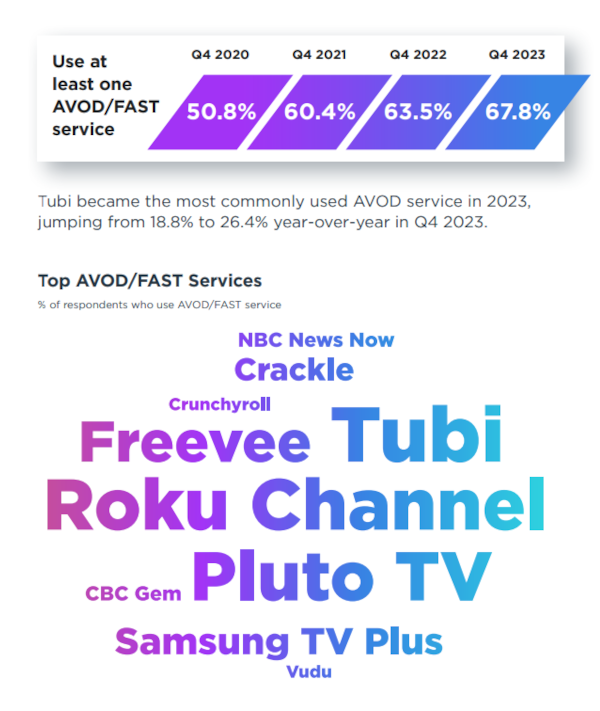
One of the most telling findings of the TiVo survey is the number of people who are going back to cable TV — so-called “cord-revivers.” A surprising 64% of respondents reported resubscribing to cable in the six months prior to the survey, with just over a third (34%) saying that they couldn’t get all the entertainment they wanted without cable. The finding signals a potential reverse in the steady rise in cord-cutting we have witnessed over the past decade or so. Others in this group cited cable as the “best way” to watch major live events (29%), local programming (28%), and sports (27%).
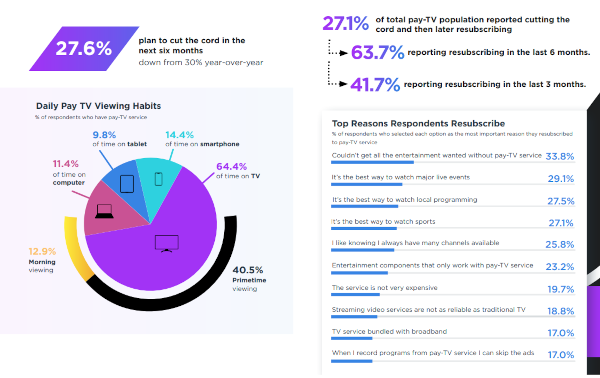
Further reinforcing the potential beginnings of a cord revival, is the 28% of respondents who said they were planning to “cut the cord” in the six months following the survey — a number that is down 30% from the previous year.
TiVo has been conducting quarterly or biannual video trend surveys for thecpast 14 years. The “Q4 TiVo Video Trends Report: North America” is based on a survey of 4,436 adults in the U.S. and Canada, 18 years of age or older.
Related
Survey: Content Discovery Is the Key Drawback in the Age of Streaming (3/1/23)
- Log in or register to post comments

I saw it coming before it even started! What made people think that cable companies are unique in their tactics? This is the American way!! the 'we hook them, then we cook them' mantra. Every service that got a rapid rise in their subscriber numbers raised their price, and if people keep paying, they'll do it again and again....
That's why it pays to know your way around the WWW and find clever ways to watch whatever you want whenever you want for hardly any p rice at all!

Turns out, just like with music streaming, that the low costs to consume huge amounts of media were false. The current higher prices are getting closer to the true costs of supplying this much media content...



































